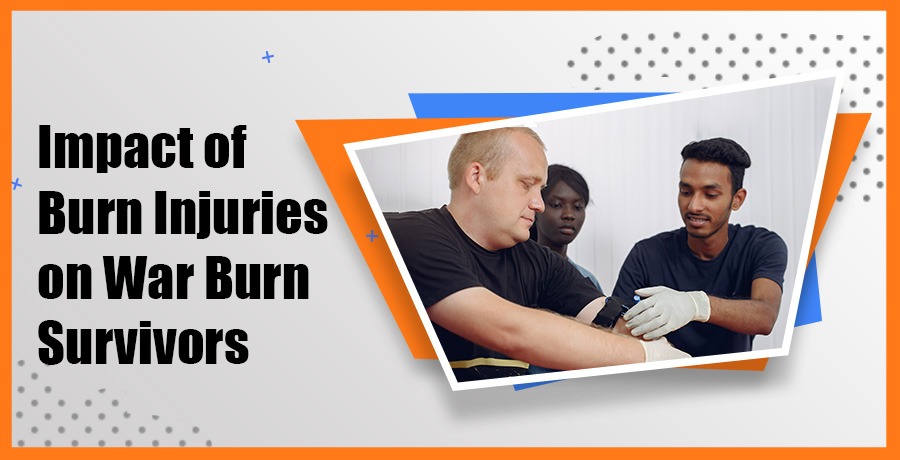
The period of acute confrontation might have passed, the gun powder may have settled, the battlefield has grown silent too, but the actual war has just started; it is not on the ground but in the flesh and mind of the survivor. Burn injuries are one of the most terrifying effects of war, and they are an invisible cruelty which is much more than the visible scars. War burn survivors, who are usually heroes to society, endure a long and excruciating process of physical, emotional, and social recuperation, which may be lifelong.
Having years of experience in the area of plastic and reconstructive surgery, Dr. Anup Dhir, who is one of the pioneers in the field, illuminates an unknown large scope of effects of combat and conflict burns. His work not only reconstructs injured skin but also assists in stitching together disintegrated lives.
The Nature of War Burns
The burns that one gets during war are frequently more complicated as compared to the domestic and accidental burns. Deep tissue, high voltage electrical burn, chemical exposure and thermal injury of explosions. These are not only painful, they are life-changing injuries. The majority of the survivors get third-degree burns, which burn through all the skin layers and frequently encompass the muscles, tendons, and even the bones.
A report published in the Armed Forces Medical College (AFMC) shows that more than 60% of the war-related injuries in fighting areas such as Kargil and Siachen combat have an element of burns. This is not a minor injury which takes only one visit and another operation process; this is something which demands a long-term rehabilitation process, and some surgical treatment.
Psychological Trauma of Burn Injuries
According to Dr. Anup Dhir, it is usually difficult to heal the wound when one does not see it. Burn victims often fight with Post-Traumatic Stress Disorder (PTSD), depression, image and social alienation. Even though the fires are extinguished, the memories of the incident are still with them, being caused either by the blast of an IED, an explosion caused by napalm, or by an airstrike.
Dr. Anup Dhir also highlights the aspect of any psychosocial and physical recovery. You can graft skin, you can rebuild a face or a hand, but confidence, self-worth, that takes feeling, treatment and time, he states.
Recovery among a survivor of war burns never becomes a one-time thing. It is an endurance contention of:
- Multiple Surgeries: Surgeries that consist of skin grafting, flap, and reconstructive procedures to be done over months or years.
- Physiotherapy: To restore the capacity for movement in case of burn contractures.
- Scar Management: It involves the use of pressure garments, silicone gels and laser therapy in some cases.
- Psychological Counselling: To deal with the identity changes and trauma.
Dr. Anup Dhir notes that proper debridement surgery is vital in averting deformities and infection, and that both of these are widespread in battlefield situations because of the lack of medical facilities.
Reintegration Issues and Social Stigma
In most societies, unfortunately, including India, burn scars may result in social ostracism, especially when the facial part of the body is affected by the burn. Survivors of war have difficulties in readjusting themselves to civilian life. The disfigurement, which is plain to see, attracts stares, comments, and even discrimination in terms of job or marriage.
This is especially severe when it comes to young soldiers or civilians who are in the crossfire. Dr. Anup Dhir has attended to so many patients who avoid looking at themselves in mirrors even after months. Social acceptance turns out to be even more problematic than the burn itself, he thinks.
Importance of Reconstructive Surgery
With the help of plastic surgery , most irreparable damage could now be restored with functional and aesthetic reconstruction, since the advent of plastic surgery was considered impossible. Some of the high-tech methods that Dr. Anup Dhir and his staff employ are:
- Free flaps vicaria microvascular
- Tissue expansion
- Computer-assisted facial reconstruction 3D imaging.
- Customised prosthetics
In his words, it is all about the restoration of functionality: a closed hand, a moving mouth or a blinking eyelid. But more than that, there is the unspoken magic of getting a survivor to smile once again, without shuddering at their image.
Women War Burn Victims
A burn injury in women (be it a soldier, a nurse or a civilian) faces another challenge of societal expectation and gender roles. They can be seriously surprised in their ability to work, in their relations and in having children due to facial disfigurement or limb loss. Dr. Anup Dhir has served the cases of multiple female survivors who were deprived of even the simplest care or assistance at first because of the stigmatisation of their looks.
War burn survivors not only require hospitals and specialists, but they also require hope, comprehensive care, and human interaction. India requires additional burn facilities, active-duty military-oriented rehabilitation programs and education to end the stigma against scars. This is what we require:
- Military Burn Units Specialists
- Veterans Rehabilitation Camps
- Compensation, Government, and Job Reservation
- To Normalise Burn Scars- Awareness Campaigns
Dr. Anup Dhir thinks that the future of burn recovery is interdisciplinary care encompassing surgeons, psychologists, occupational therapists, and social workers. Such soldiers want merit more than medals.
Scars become the marks of punctuation in poetry of war: they are painful and jagged, yet required in order to tell the story. Burns are destructive, but they are not able to dim the light of a survivor. The story is changing, i.e. it is moving towards success, with physicians such as Dr. Anup Dhir as the pioneers. In case you or someone you know is a burn survivor in need of such assistance, reach out to burn reconstruction experts or a support group, such as Dr. Anup Dhir and book an appointment today, as each scar tells a story, and every story needs one chapter of healing.

